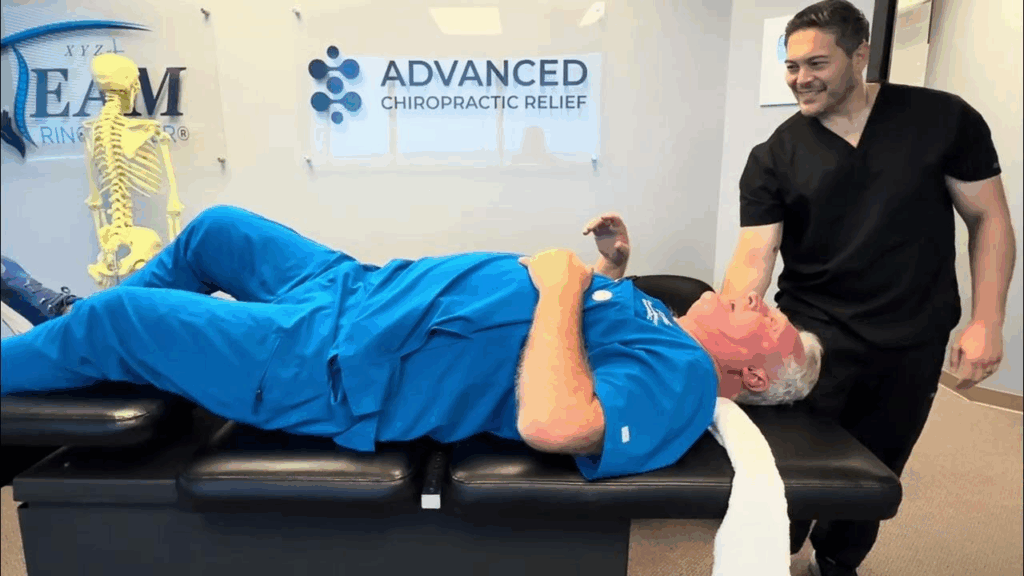Athletes and active individuals constantly challenge their physical limits. While this lifestyle brings strength, endurance, and agility, it also increases the risk of strain, injury, and repetitive stress, especially in the spine. Back pain is one of the most common issues for active patients, often caused by compression, muscular tightness, or disc imbalances.
We understand the need for reliable and effective tools that provide relief, restore alignment, and support recovery. One solution that delivers consistently for active patients is a quality back traction table. Whether used for spinal decompression therapy or regular pain relief, the right traction table can help patients stay mobile, strong, and injury-free.
Why Athletes Need Specialized Back Treatment
Active patients don’t just seek comfort they require performance-based outcomes. Athletes place significant stress on their bodies through high-impact movements, repetitive motions, and intense training routines. These physical demands can lead to strain on the spine and muscles, making recovery tools like back traction tables essential for relief, alignment, and injury prevention. These demands can lead to:
- Lumbar disc pressure
- Joint compression
- Sciatica or nerve pain
- Poor spinal alignment
- Tight muscle groups
For clinics treating athletes, it’s essential to use treatment equipment that meets their advanced recovery needs. Passive rest may help in the short-term, but athletes need non-invasive, progressive treatments that enable them to return to activity quickly and with full function.
Back traction therapy provides a targeted solution. By stretching and decompressing the spine, it helps relieve pressure, reduce inflammation, and encourage natural realignment.
What Is a Back Traction Table?
A back traction table is a therapy tool designed to gently separate spinal vertebrae. This process—known as spinal decompression—relieves pressure from discs, joints, and nerves. The therapy can be applied to both the lumbar and cervical spine, depending on the table’s setup.
Unlike manual stretching or inversion systems, traction tables offer a controlled and gradual decompression. They’re often used by chiropractors, physical therapists, and sports rehabilitation centers. The goal is to reduce pain, restore range of motion, and support proper alignment over time.
Some traction tables are fully motorized with programmable settings. Others offer mechanical or manual controls to adjust tension and pull angle. Each model has different advantages depending on the treatment plan and clinic setup.
Key Features of Effective Traction Benches
We recommend selecting traction tables that meet multiple standards for both performance and comfort. Here are the most important features to look for when treating active patients:
1. Adjustability and Tension Control
The ability to adjust a table’s pull force, angle, and segment height is crucial for effective treatment. Each patient’s body type and condition requires a different level of decompression, so customizable settings ensure both comfort and targeted results. A fully adjustable system allows practitioners to tailor each session to the individual’s needs.
2. Motorized vs. Manual Operation
Motorized traction benches deliver consistent, controlled force, enhancing precision during treatment. They’re especially beneficial in high-volume clinics or when treating patients who need specific, repeatable decompression levels. Manual tables offer simplicity and lower maintenance, which may suit smaller practices.
3. Comfortable Support Surfaces
Patients recovering from physical exertion or injury need ergonomic design. High-density foam, adjustable headrests, and lumbar support sections all contribute to a better experience during treatment sessions.
4. Built-In Safety Features
Emergency stop controls, locking wheels, and stable frames help ensure safe operation. These are particularly important when working with larger athletes or patients with mobility issues.
5. Therapy Compatibility
The best tables can be combined with other techniques. This includes manual therapies, electrical stimulation, or heat therapy. A multi-use setup saves time and creates more comprehensive treatment plans.
Top Benefits for Active Patients
When used correctly, back traction therapy offers a range of results that directly support the needs of athletic clients:
1. Faster Recovery
Traction encourages natural healing by reducing pressure on injured or inflamed tissues. This allows muscles to relax, inflammation to subside, and blood flow to improve—all of which speed up recovery.
2. Pain Reduction Without Medication
Athletes often seek drug-free options to avoid side effects or restrictions in competition. A traction table delivers consistent relief without needing prescriptions or injections.
3. Improved Flexibility and Range of Motion
By decompressing tight areas in the spine, traction tables can help restore mobility. This is especially useful for athletes working to regain function after injury or overtraining.
4. Better Posture and Alignment
Spinal alignment is key to movement efficiency. Regular traction helps athletes maintain a neutral posture, reduce compensations, and improve form during training or competition.
5. Prevention of Future Injury
By maintaining space between the vertebrae, traction therapy reduces disc and joint damage. This makes it easier for active patients to avoid recurring injuries.
Choosing the Right back traction table
We believe that every clinic should carefully evaluate their specific needs before choosing a table. Here are the key factors to consider:
1. Treatment Volume and Clinic Size
High-traffic clinics benefit most from motorized tables with automated cycles. These save time and reduce manual labor. Smaller clinics may prefer simpler tables that still offer adjustability without requiring large setups.
2. Patient Demographics
Treating athletes requires different features than treating general back pain patients. Look for benches that support a wide range of body sizes, flexibility levels, and therapy durations.
3. Equipment Longevity
Durability is non-negotiable. Investing in a table that holds up under frequent use will save costs and reduce downtime. Evaluate the table’s build quality by checking the materials used, its weight capacity, and the availability of service or replacement parts. These factors help ensure long-term durability, patient safety, and continued reliability in your clinic.
4. Ease of Use
Staff should be able to operate the table quickly and safely. Simple controls, clear settings, and automated presets improve the treatment flow and reduce errors.
A well-designed traction table should become an asset to your clinic—not a challenge to operate or maintain.
Maintenance and Safety Guidelines
Any equipment used frequently must be maintained regularly. This ensures both patient safety and optimal performance. Here’s what we recommend:
1. Daily Surface Cleaning
Use approved disinfectants to wipe contact surfaces between patients. Pay close attention to areas like headrests, pads, and arm supports.
2. Weekly Function Checks
Examine all moving parts, cables, and motors. Listen for irregular sounds or movement patterns. Replace any worn components immediately.
3. Regular Calibration
For motorized tables, settings should be recalibrated based on manufacturer guidelines. This helps maintain accuracy in decompression levels and prevents stress on the motor.
4. Staff Training
Each team member should be trained on how to use the table safely, including emergency stops, tension settings, and patient positioning. Periodic refreshers help reinforce best practices.
Following these routines keeps your investment operating smoothly and reduces the chance of unplanned repairs or liability issues.
Final thought
Athletes and active patients place high demands on their bodies—and they deserve equipment that supports both healing and performance. A high-quality traction table helps relieve pain, improve mobility, and restore proper function without resorting to medication or extended downtime.
From adjustability and safety to patient comfort and staff usability, every feature plays a role in delivering reliable care. The right table becomes more than a tool—it becomes a central part of your clinic’s ability to serve those who push themselves hardest.
At Advanced Chiropractic Equipment LLC, we understand the importance of reliable, versatile equipment. We focus on helping clinics like yours select tools that offer measurable results and long-term dependability. With the right setup, you can provide high-level care that keeps athletes doing what they love—with strength, safety, and resilience.
If your clinic is ready to offer proven, drug-free relief with long-term benefits, consider the impact of a well-designed back traction table. It’s a smart investment in your practice—and your patients’ performance.
FAQs
Why are back traction tables effective for athletes?
These tables help relieve spinal pressure, improve flexibility, and accelerate recovery after intense physical activity or sports injuries.
What features should a traction table have for athletic patients?
Key features include adjustable traction settings, lumbar and cervical support, durable construction, and precise control for targeted relief.
Are back traction tables safe for daily use by active individuals?
Yes, when used under professional guidance, these tables are safe and beneficial for regular use in managing muscle strain and spinal stress.
How do traction tables support post-injury rehab for athletes?
They gently stretch the spine, reduce nerve compression, and promote circulation, aiding faster healing and reduced downtime.
Can back traction tables be used for preventive care?
Absolutely—they help maintain spinal alignment and reduce the risk of injury, making them valuable for ongoing athletic performance and health.


